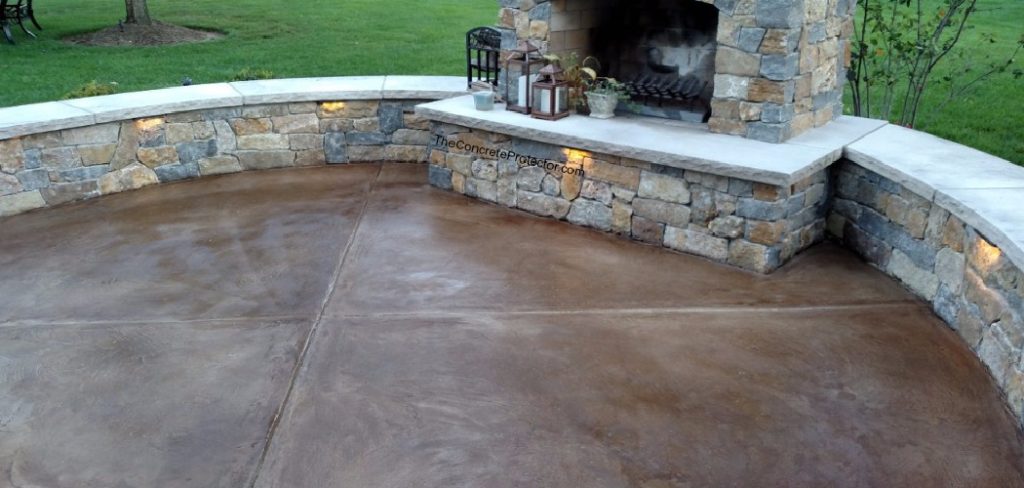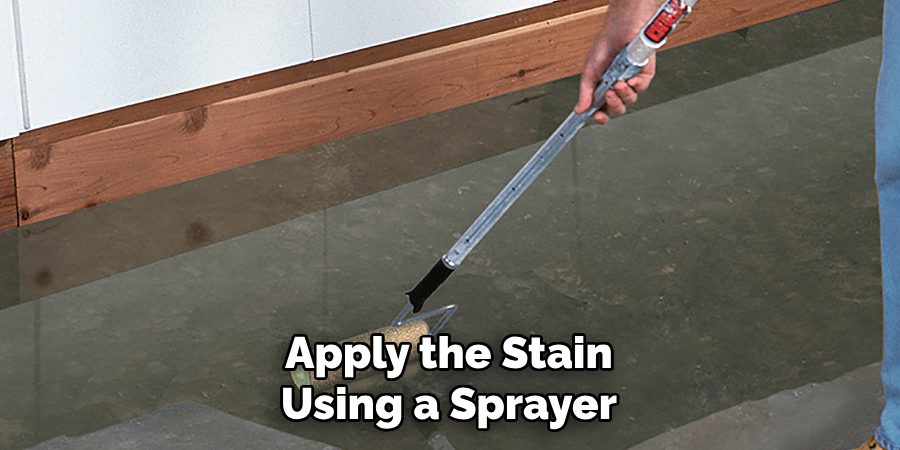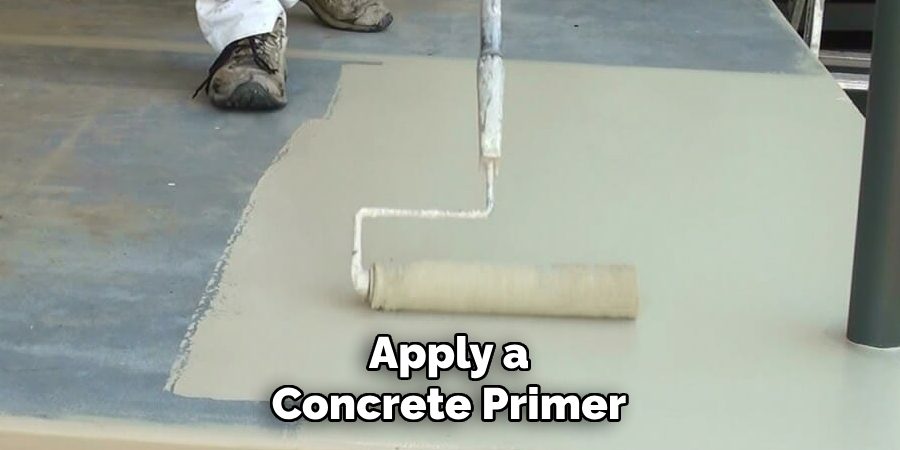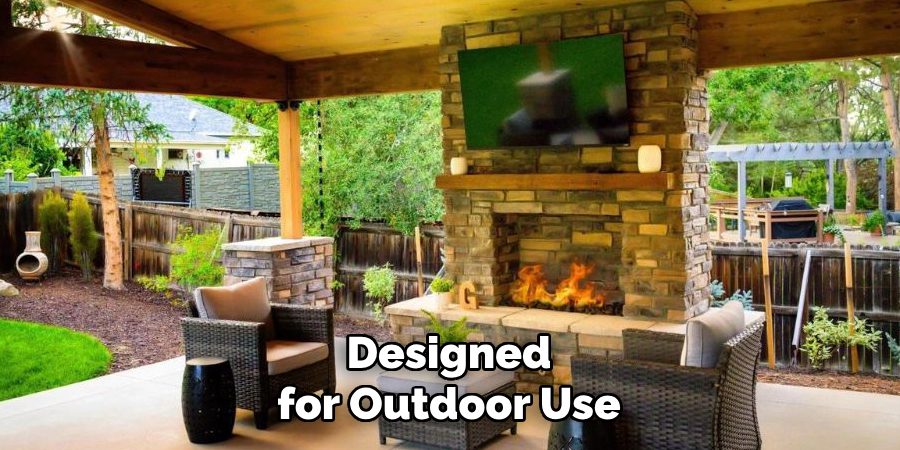A concrete porch is a durable and practical feature of any home, but over time, it may begin to show signs of wear or lose its visual appeal. Covering a concrete porch is an excellent way to enhance its appearance, protect it from further damage, and even add value to your home. Whether you’re looking to update its style or improve its functionality, there are a variety of materials and techniques available to give your porch a fresh new look.

This guide will walk you through the key steps and options for how to cover concrete porch effectively.
Importance of Covering a Concrete Porch
Covering a concrete porch offers several benefits that go beyond just improving its visual appeal. First and foremost, it provides an added layer of protection against harsh weather conditions, such as rain, snow, and UV rays, which can cause cracks, discoloration, and erosion over time.
This protective covering helps to extend the lifespan of the concrete, reducing the need for frequent repairs or replacements. Additionally, a covered porch can enhance safety by providing a slip-resistant surface, particularly important in areas prone to moisture or freezing temperatures.
From an aesthetic perspective, it allows homeowners to customize the space, creating a more welcoming and cohesive look that complements the overall design of the home. Ultimately, covering your concrete porch is a practical and worthwhile investment for both functionality and curb appeal.
Choosing the Right Porch Covering
When selecting a covering for your concrete porch, it’s important to consider both functionality and style to ensure the best results. Start by assessing the climate in your area and the amount of wear and tear the porch is likely to receive.
For example, in regions with extreme weather, durable and weather-resistant options such as tile, stone, or outdoor rugs may be ideal. If slip resistance is a priority, textured finishes like stamped concrete or rubberized coatings are excellent choices. For those looking to achieve a natural or rustic aesthetic, wood or composite decking boards can create a warm and inviting atmosphere.
Additionally, consider your budget and maintenance requirements—some materials, like pavers or concrete overlays, offer cost-effective yet stylish solutions, while others, such as hardwood, may require more upkeep. By carefully weighing these factors, you can choose a porch covering that balances practicality, durability, and design to suit your specific needs.
10 Methods How to Cover Concrete Porch
1. Applying a Concrete Resurfacer for a Fresh Look
One of the simplest and most cost-effective ways to refresh a concrete porch is by applying a concrete resurfacer. This thin layer of cement-based material fills in small cracks and imperfections while providing a smooth, uniform finish. To apply, first clean the existing concrete thoroughly to remove dirt and debris.

Then, mix the resurfacer according to the manufacturer’s instructions and spread it evenly using a trowel or squeegee. Adding a textured finish, such as a broom or stamped pattern, enhances slip resistance and visual appeal. A concrete resurfacer not only restores the porch’s appearance but also extends its lifespan.
2. Installing Interlocking Deck Tiles for an Instant Upgrade
Interlocking deck tiles are an excellent solution for covering a concrete porch with minimal effort. These tiles, made of wood, composite, or stone, snap together and sit on top of the existing surface without requiring adhesives or nails. They allow water to drain beneath, preventing moisture buildup.
To install, simply clean the porch, lay out the tiles, and lock them in place. Wooden deck tiles, such as teak or acacia, offer a natural look, while composite tiles provide low-maintenance durability. This method is ideal for renters or homeowners looking for a temporary yet stylish upgrade.
3. Staining the Concrete for a Custom Design
Concrete stain is a great option for those who want to enhance their porch’s appearance while maintaining its natural texture. Available in water-based or acid-based formulas, stains penetrate the concrete to create a permanent color that won’t chip or peel like paint.
Acid stains react chemically with the concrete, producing rich, variegated tones, while water-based stains offer a broader range of colors. Before application, thoroughly clean and etch the concrete to ensure proper absorption. Apply the stain using a sprayer or brush, and seal the surface with a clear protective coating for long-lasting results.

4. Laying Outdoor Carpeting for Comfort and Warmth
Outdoor carpeting is a simple and affordable way to cover a concrete porch while adding comfort and warmth underfoot. Available in various colors and textures, outdoor carpets are designed to resist moisture, mold, and UV damage.
Installation involves measuring the porch, cutting the carpet to size, and securing it with outdoor carpet adhesive or double-sided tape. A low-pile, textured carpet works best for high-traffic areas, while a plush option provides a softer feel. Regular cleaning with a hose or vacuum keeps the carpet looking fresh.
5. Using Pavers or Bricks for a Classic Appearance
Pavers or bricks can be laid over a concrete porch to create a traditional, elegant look. This method involves placing a layer of sand or a mortar bed on top of the concrete to ensure a level surface.
Pavers can be arranged in various patterns, such as herringbone or basket weave, to add visual interest. Once in place, polymeric sand is swept into the joints and watered down to harden, securing the pavers. This durable option enhances the porch’s aesthetic while providing excellent resistance to weather and wear.
6. Installing Composite Decking for a Modern Finish
For a sleek, long-lasting solution, consider covering your concrete porch with composite decking. Made from a blend of wood fibers and plastic, composite boards resist rot, insects, and fading.
Installing composite decking involves attaching a pressure-treated wood frame over the concrete and securing the decking boards with hidden fasteners. This method creates the look of a traditional wood deck without the maintenance required for natural wood. Composite decking comes in various colors and textures, allowing homeowners to customize the porch’s appearance to match their style.
7. Painting the Concrete for a Budget-Friendly Makeover
A fresh coat of paint is one of the easiest and most affordable ways to update a concrete porch. Special concrete paints are available in a variety of colors and finishes, including matte, satin, and glossy options. Before painting, clean and etch the concrete to improve adhesion.

Apply a concrete primer followed by two coats of paint using a roller or sprayer. To enhance durability, finish with a clear sealer that protects against foot traffic and weather damage. For added visual appeal, use stencils or masking tape to create patterns such as stripes or geometric designs.
8. Adding a Wooden Overlay for a Rustic Touch
A wooden overlay creates the charm of a traditional deck while utilizing the existing concrete base for support. Pressure-treated lumber or cedar is ideal for this application due to its resistance to moisture and insects.
Begin by installing a wooden frame over the concrete, ensuring proper drainage and ventilation to prevent rot. Secure the deck boards to the frame using screws or hidden fasteners. Staining or sealing the wood helps preserve its natural beauty and extends its lifespan. This method provides a warm, inviting atmosphere perfect for outdoor relaxation.
9. Installing Tile for a Stylish, Durable Surface
Outdoor tiles, such as porcelain, ceramic, or natural stone, provide a stylish and long-lasting way to cover a concrete porch. Tiles resist moisture, stains, and fading, making them an excellent choice for high-traffic areas.
Before installation, clean and level the concrete surface. Use a high-quality exterior tile adhesive to secure the tiles, and apply grout to fill the gaps. Slip-resistant or textured tiles enhance safety by preventing slips when wet. Sealing the grout and tiles ensures longevity and easy maintenance. This option allows homeowners to create a high-end look with endless design possibilities.
10. Covering with Artificial Grass for a Lush, Green Look
For those who want a natural aesthetic without the upkeep of real grass, artificial turf is an excellent option. Designed for outdoor use, synthetic grass provides a soft, cushioned surface that resists fading and drainage issues.

Installation involves cleaning the concrete, applying an adhesive, and securing the turf with outdoor tape or staples. Some artificial grass options come with built-in drainage layers to prevent water buildup. This eco-friendly alternative creates a unique, low-maintenance outdoor space ideal for lounging or entertaining.
Conclusion
Transforming a concrete porch doesn’t have to be a daunting task. By exploring the wide range of options available—such as staining, painting, tiling, or installing composite decking—you can create a space that reflects your style and meets your practical needs.
Whether you prefer a rustic wooden overlay, a sleek modern finish, or a vibrant painted design, there’s a solution to suit any budget or aesthetic. Beyond enhancing curb appeal, these upgrades can make your porch more comfortable, functional, and inviting for years to come. Thanks for reading, and we hope this has given you some inspiration on how to cover concrete porch!

Professional Focus
Oliver Wood, a passionate patio designer, specializes in creating comfortable and inviting outdoor spaces that enhance relaxation and entertainment. His work combines a deep understanding of design with a love for nature, making him a standout professional in the field of outdoor living spaces. Through his thoughtful approach, he transforms everyday patios into extraordinary retreats for family and friends.
About the Author
Oliver Wood, a skilled patio designer, shares his expertise on outdoor living through his designs and insights. With a background in patio design and a genuine passion for creating beautiful spaces, he encourages others to invest in their outdoor environments, enhancing their homes with functional and inviting spaces for relaxation and entertainment.
Education History
University: Virginia Union University
Oliver’s education equipped him with the knowledge and skills to design patios that merge aesthetics with comfort, transforming outdoor areas into beautiful extensions of the home.
Expertise:
- Patio Design and Outdoor Living Spaces
- Functional and Aesthetic Landscaping
- Comfortable and Inviting Outdoor Environments
- Design Philosophy for Family-Oriented Spaces
- Creating Spaces for Relaxation and Entertainment
